How does the minimum wage affect the Fed’s biggest fear? I touched on this subject previously as the Fed began its rate-hiking campaign. However, while the issue of the “millions of people” who aren’t paid a “living wage” for work makes headlines, the actual numbers are pretty underwhelming.
As of the end of 2021, there are 2 million workers at, or below, minimum wage. Crucially, this number includes those in the restaurant profession that are paid “wages” of $2/hour but also receive tips. Notably, the number and total percentage of ALL workers today at or below minimum wage are at the lowest levels since 1979.
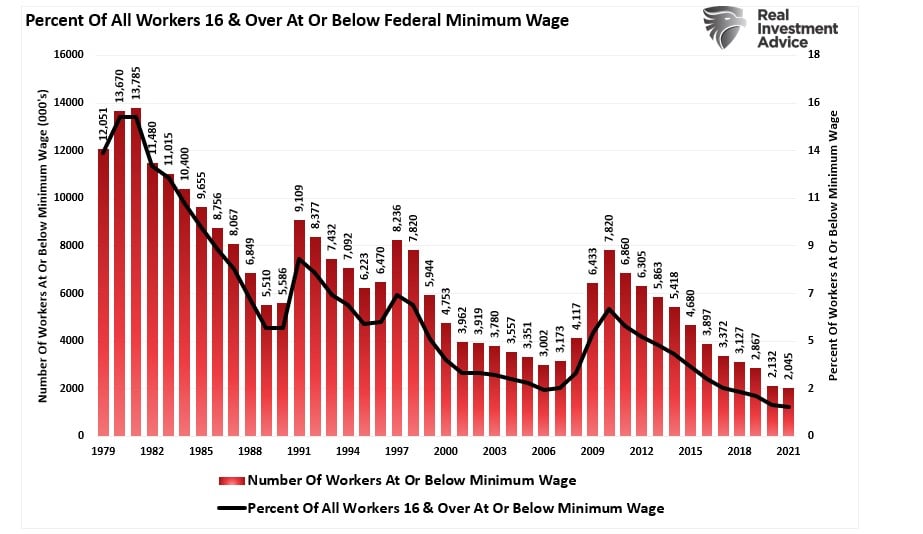
Where Are They?
Unsurprisingly, you will find the majority of minimum wage earners in fast-food, transportation, and personal care occupations.
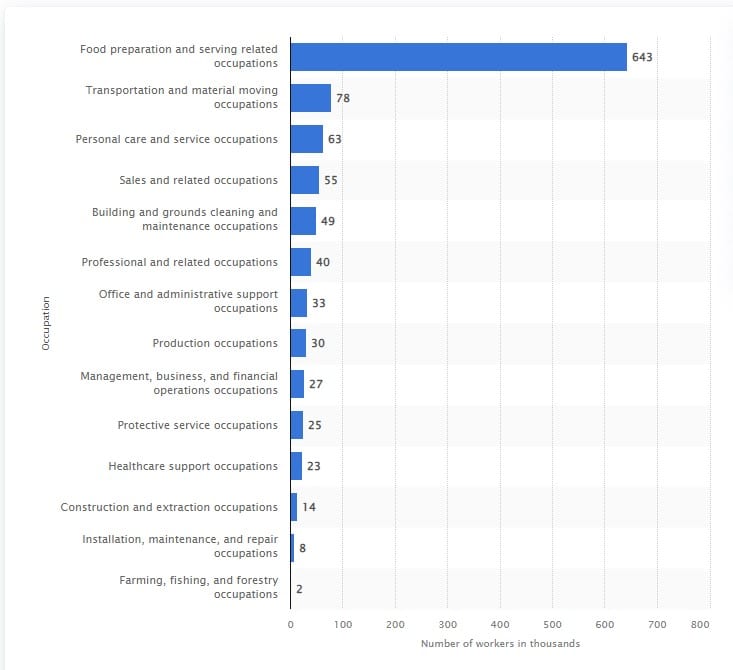
As the Bureau of Labor Statistics notes:
Minimum-wage workers tend to be young. Although workers under age 25 represented nearly one-fifth of hourly paid workers, they made up 44 percent of those paid the federal minimum wage or less.
The Federal Minimum wage is a political “hot potato” that garners attention but has little impact on the economy’s overall health.
“So what? People working at restaurants need to make a ‘living wage.'”
While it is an emotionally charged argument, the minimum wage is not meant to be a living standard.
Minimum wage jobs are starter positions to allow businesses to train, evaluate, and grow valuable employees.
- If the employee performs, wages increase along with additional duties.
- If not, they either remain where they are or get replaced.
Critically, minimum wage jobs were not meant to be permanent or “living wage.”
If an individual remains stuck at the minimum wage, it may have more to do with the worker than the employer. According to a recent survey of 1344 managers by ResumeBuilder.com, GenZ, the group most likely found working at minimum wage, is “the” most challenging generation to work with.
- 49% say it’s difficult to work with GenZ all or most of the time
- The top reasons they feel GenZ is difficult to work with are the lack of technological skills, effort, and motivation.
- 65% say they more commonly need to fire GenZers than employees of other generations
- 12% have fired a GenZer less than one week after their start date
- Being too easily offended is a top reason GenZers get fired.
Nonetheless, there is a misplaced outcry for hiking the minimum wage to $15 an hour, or in California’s case, $22. The problem, of course, is the economic impact on those receiving those pay increases.
As is always the case, there is “no free lunch.”
No Free Lunch
Okay, let’s hike the minimum wage to $15/hr. That doesn’t sound like that big of a deal.
However, assume the employee works full-time, earning $15/hour.
- $15/hr X 40 hours per week = $600/week
- $600/week x 4.3 weeks in a month = $2,580/month
- $2580/month x 12 months = $30,960/year.
Given that most are in the fast-food industry, what happens to the price of hamburgers when companies must pay $30,000 annually for “hamburger flippers?”
McDonald’s and Walmart can give you a clue.
“KeKe Mendez recorded herself driving to a McDonald’s drive-thru. When she approached the window, there wasn’t an employee in sight. Instead, she was met with an automated machine handling her order. The machine placed the bag down and pushed it on a conveyor belt to the window.“
After Walmart and Target) announced higher minimum wages, layoffs occurred, and cashiers got replaced with self-checkout counters. Restaurants added surcharges to help cover the costs of higher wages, a “tax” on consumers, and chains like McDonald’s and Panera Bread replaced cashiers with apps and ordering kiosks.
Such should not be surprising as labor costs are the highest expense to any business. It’s not just the actual wages but also payroll taxes, benefits, paid vacation, healthcare, etc. Employees are not cheap; that cost must be covered by the goods or services sold. Therefore, if the consumer refuses to pay more, the costs must become offset elsewhere.
More importantly, just as we found out with sending stimulus payments to households, the service cost will increase once businesses realize more money is available. As noted by the Heritage Foundation, the impact of a $15 Federal minimum wage would increase childcare costs by $2000 to $6000 depending on the state.
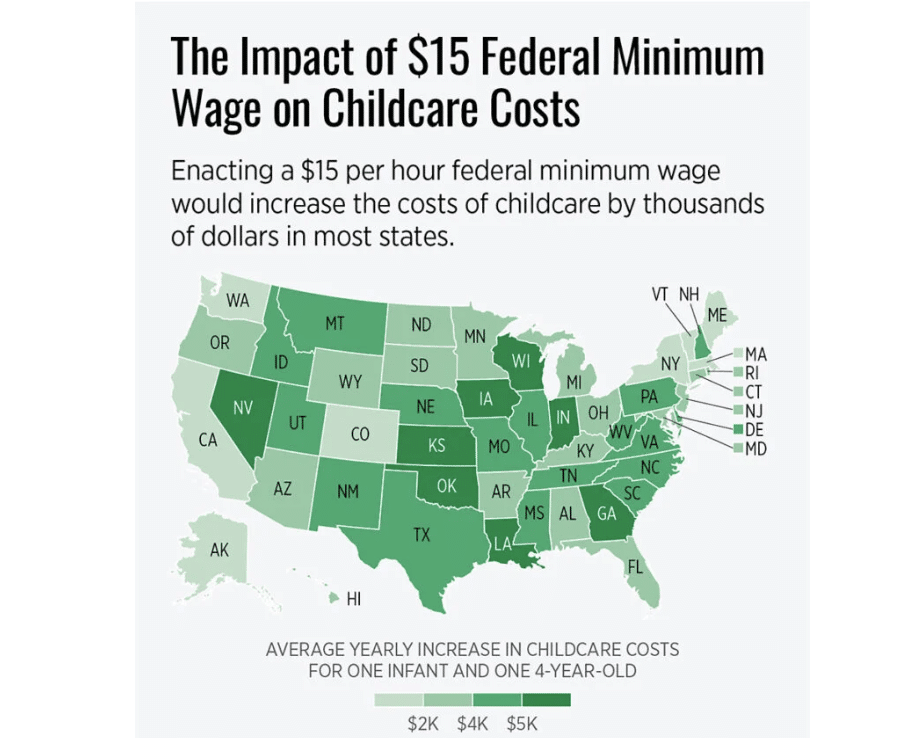
In other words, there is “no free lunch,” as increasing the minimum wage will lead to an increase (inflation) in everything else, essentially wiping out the benefit of the wage increase.
However, there is more to hiking the minimum wage than just increased costs. It has the potential to exacerbate the Fed’s biggest fear.
The Wage Spiral
How can hiking the minimum wage foster a wage spiral?
Let’s look at an example parcel carrier job that currently pays $15/hour and has the following work requirements.
- Lifting boxes up to 150 lbs.
- Loading and unloading trucks in a warehouse that can be freezing or sweltering,
- Driving a large truck anywhere from 10-150 miles a day,
- Customer interaction,
- Route planning.
What would be the consequences of raising the minimum wage to $15/hour for this worker?
There are two possible outcomes.
- Instead of lifting parcels of up to 150 lbs per day, they quit for a much easier job for the same pay; or
- Demands a pay raise (which, if they don’t get the raise, they quit to take a much easier job.)
The parcel carrier service acquiesces and raises them to $20/hour. However, now the managers making $20/hour want a raise, and so forth. It is the same effect as throwing a rock into a pond. Yes, the rock (in this case, the number of minimum-wage workers) may be small, but the “ripple effect” to the pond’s edges becomes substantial.
As wages increase at the bottom, there is a trickle-up effect on all workers. Importantly, those accelerating wage costs ultimately must pass on to consumers, otherwise known as inflation. That cycle of rising wages and prices is the “wage-price spiral.” The Fed already got a taste of the problem with the influx of stimulus into the economy, which led to surging demand when employees were scarce.
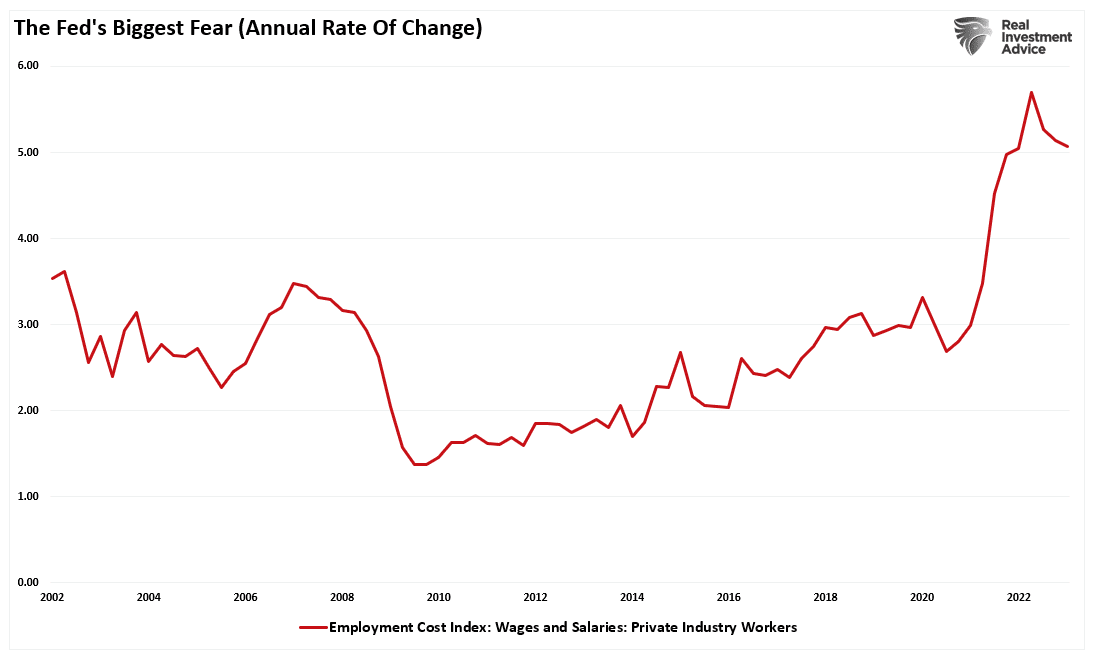
Such is also why the Federal Reserve remains committed to hiking interest rates to slow economic demand (which, in turn, will lower wages as unemployment increases) to reduce inflationary pressures.
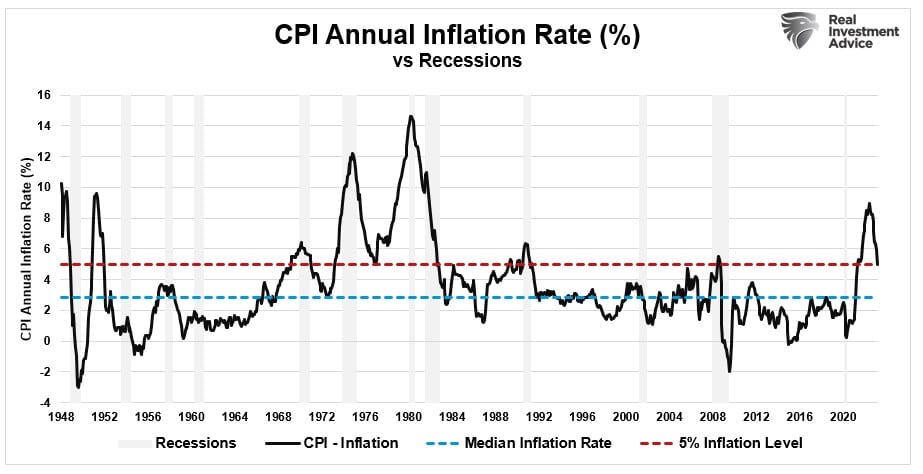
The Consequences
The consequences of mandated minimum wage increases are problematic due to the impact such can have on overall wages, costs, and corporate responses. The Manhattan Institute previously concluded:
“By eliminating jobs and/or reducing employment growth, economists have long understood that adoption of a higher minimum wage can harm the very poor who are intended to be helped. Nonetheless, a political drumbeat of proposals—including from the White House—now calls for an increase in the $7.25 minimum wage to levels as high as $15 per hour.
But this groundbreaking paper by Douglas Holtz-Eakin, president of the American Action Forum and former director of the Congressional Budget Office, and Ben Gitis, director of labormarket policy at the American Action Forum, comes to a strikingly different conclusion: not only would overall employment growth be lower as a result of a higher minimum wage, but much of the increase in income that would result for those fortunate enough to have jobs would go to relatively higher-income households—not to those households in poverty in whose name the campaign for a higher minimum wage is being waged.”
Such is just common sense logic, but it also finds support from the CBO report.
- Reductions in employment would initially be concentrated at firms where higher prices quickly reduce sales. Over a longer period, however, more firms would replace low-wage workers with higher-wage workers, machines, and other substitutes.
- A higher minimum wage shifts income from higher-wage consumers and business owners to low-wage workers. Because low-wage workers tend to spend a larger fraction of their earnings, some firms see increased demand for their goods and services, which boosts the employment of low-wage workers and higher-wage workers alike.
- A decrease in low-wage workers reduces the productivity of machines, buildings, and other capital goods. Although some businesses use more capital goods if labor is more expensive, that reduced productivity discourages other businesses from constructing new buildings and buying new machines. That reduction in capital reduces low-wage workers’ productivity, which leads to further reductions in their employment.
The critical point here is that the unintended consequences of a minimum wage hike in a weak economic environment are not inconsequential. Given that businesses will fight to maintain profitability, hiking the minimum wage, given the subsequent “trickle-up” effect, will lead to further automation and the “off-shoring” of jobs to reduce rising employment costs.
The Federal Reserve is keenly aware of the wage-price spiral and understands that increasing borrowing costs will eventually force wages to come down as the economy and inflation decline.
Unfortunately, those that just got the minimum wage increase may see their jobs soon replaced by a more cost-effective method.
